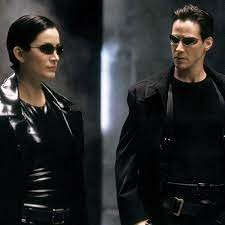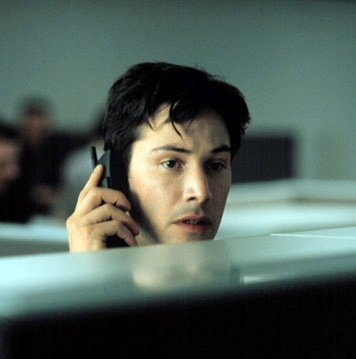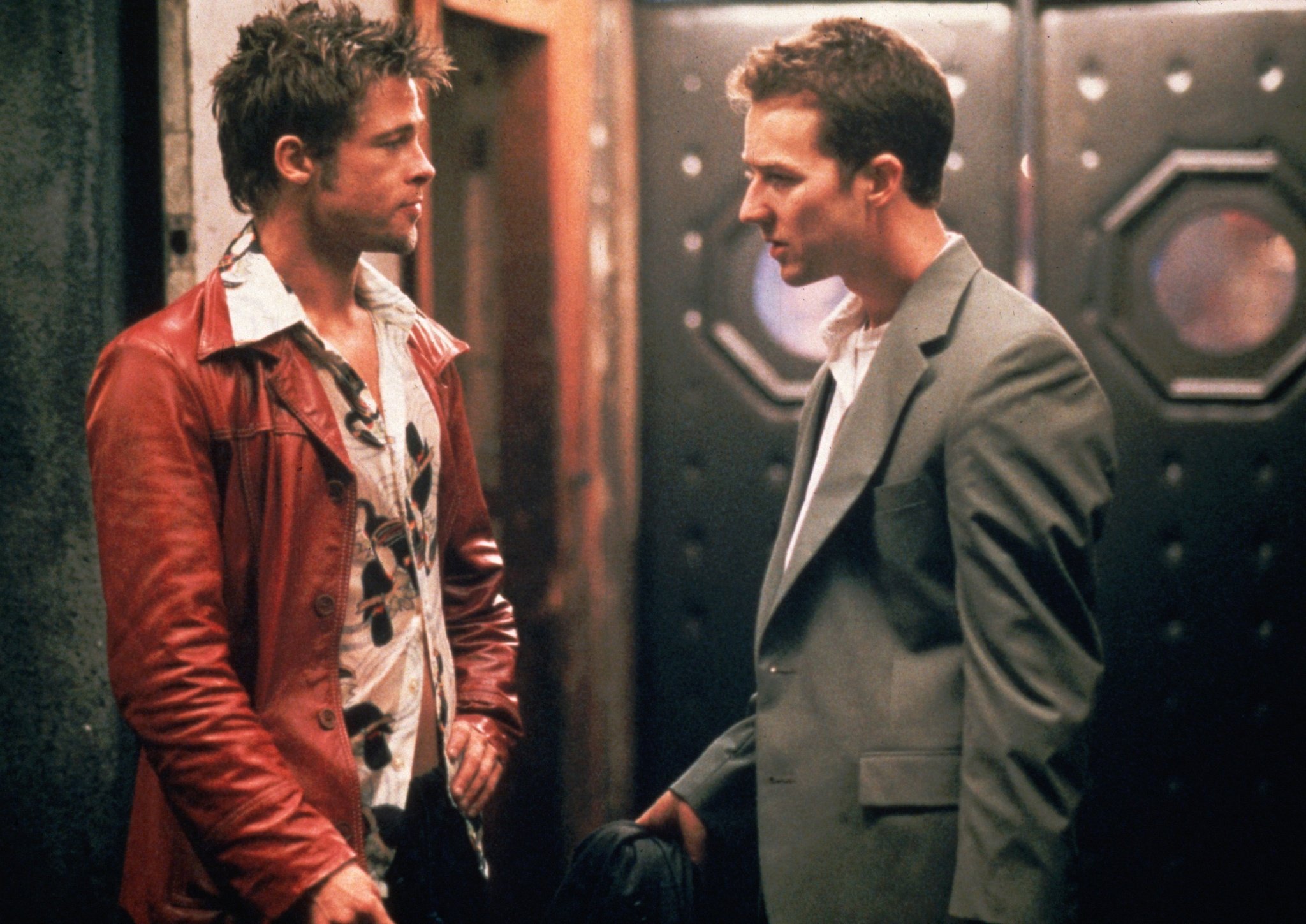Matrix Space Club
How three films from 1999 challenged our reality.
The time leading up to the 2000 new year was uncertain. Most everybody at that point had spent their whole lives writing in their dates starting with “19” on everything from job applications to new patient forms. There was even a concern with some computer programs only accepting two digit date entries (like 98 instead of 1998), causing errors in digital documentation at the turn of the century. To others who resided in more religious communities, many began circulating the idea that 2000 would be the time of the Rapture, which in the Bible is the term used for the second coming of Christ. There was a sense of the unknown, and at the end of the millennium the evaluation of human existence came in many different ways. More notably this self examination was prompted with the art of film.
Office Space
In early 1999 an all too familiar corporate workplace was put on display in the form of Office Space. The film follows its main protagonist, Peter, as he finishes up a routine work week at a job he doesn’t like, heckled by his micromanaging bosses (8 bosses, to be exact) and making the attempt to avoid weekend overtime demands. He goes to a hypnotherapy session with his unfaithful girlfriend, and due to the sudden death of the hypnotherapist, ends up getting a new attitude on life. The film then chronicles Peter’s days doing what he wants to do, like not going to work, asking out a beautiful waitress (Jen Aniston), and accidentally landing himself a promotion in the process. The film is pegged as a comedy, but some may argue it as a biopic of the modern employee, and what may happen if you think outside the cubicle.
Office Space
What Office Space gets right, and it gets a lot, is how employees are viewed from the top. Expendable numbers. Show up at this hour, work, take lunch, work more, logoff, sleep, do it all over again. It’s a system that many find security in. In 1999, automation in the world was taking off. Mobile phones were becoming more popular and not just a luxury item. The internet was relatively new, and like mobile phones, were an exciting opportunity for social convenience. Automation is convenience. Convenience is security. Security can be many things, but what happens when that security is challenged? The theme of downsizing is displayed throughout the film, putting many of the characters on edge for their job security. The art of the film is a challenge of self-examination. In the end, the film comedically shows through many examples that problems are opportunities, and are as “good” or as “bad” as one makes them out to be.
The Matrix
Shortly after the release of Office Space, the world was given a new reality to contemplate in the The Matrix. Upon its release, many were immediately taken aback not by the significance of its story line, but a new style of action that had never been seen before. Dodging bullets in slow motion, humans running along walls, all combined with unlimited options of weaponry. It would have been easy to slack on a script and produce a film like this solely based on the action sequences. While impressive with its action, and led by a stellar cast, the story line is deep and has many interpretive layers that are challenging.
The film starts in what appears to be the real world, following a program software writer named Thomas Anderson (played by Keanu Reeves), who moonlights as a computer hacker called Neo. Neo is picked up by a group of rebels who inform him that the world he is living in is not in fact the real world, but a simulated environment for which his real body is plugged into. He is advised on the status of Earth, which has now become an AI takeover where human bodies are harvested as the main energy source. One of the most profound moments in the film is a discussion Neo has with his new mentor, Morpheus (played by Laurence Fisburne). While doing an initial walkthrough of the Matrix after being unplugged, Neo questions why they haven’t attempted to convince everyone to get unplugged, to which Morpheus replies “Some people are not ready to be unplugged. Some of these people are so inured so dependent on the system that they will fight to protect it”.
The Matrix
The Matrix dials into the perception of reality. The most important step in creating a reality is belief. One needs to believe the geographical environment they live in is real. One needs to believe the people in their environment are real. Geography and people are both tangible and can be confirmed by immediate interactions, but one piece of reality that requires more effort for convincing is the information shared in this reality. This is the most important, because in a world so big, people can only be in one place at a time, and are reliant on others to share information of this reality outside their own. Only the sole individual can decide whether they want to believe this information or not. The easiest response is to believe anything, for that requires the least amount of critical thought.
Going into the year 2000, information was presented in more accessible forms than ever. The internet had become increasingly popular and most homes going into the new millennium were dialed in. People had begun to discover a new environment outside of their own where they could engage, learn, and become somebody else entirely. Humans had been conditioned to think that everything they heard on the television at that point was to be believed, because they could see and hear it with their own eyes. Now we could do the same with internet access. Information that can be manipulated for humans to think in convincing ways: “this is bad, you should reject this”, “this is good, you should embrace this”, “this is terrifying, you should be fearful”. The information could now be relayed in multiple formats, and has only grown since its start from newspapers, to television, to now internet enhanced devices such as computers and mobile phones.
Fight Club
Originally written as a novel and released as a film in late 1999, Fight Club didn’t immediately see the success that it did until later on when it was released on DVD. Perhaps it was word of mouth or it just took a longer time for viewers to understand its message before it broke out as a cult classic. The story follows a man only known to the audience as The Narrator, played by Edward Norton. The Narrator works as an auto examiner, and finds the monotony of his life loathing to the point that he spends his evenings with health therapy support groups for empathy. He has devoted his life to a consumerist mindset, making sure his condo and closet have been outfitted with all the necessities marketed to make him feel adequate.
Fight Club
Returning from a business trip, the narrator meets a traveling salesman named Tyler Durden (played by Brad Pitt). Durden has a carefree and rebellious lifestyle that immediately have an influence on The Narrator, questioning why he lives the life he lives and who is he actually living for. Durden and The Narrator begin starting secret fight clubs where two men beat each other to a pulp as a means of camaraderie and relief from their mundane work weeks. Fight clubs begin to expand across the country, with secret project teams assembled within the fight clubs that have an end goal to disrupt the outside world.
The film explores the themes of consumerism and masculinity. Masculinity is marketed, and often we define it from what is displayed on anything from tv ads to movie characters. The intent of marketing, in terms of male focused products, has always been to convince men on how a masculine man should appear. Whether it’s how a masculine man looks, how a masculine man smells, what a masculine man drinks, or what one may drive. It’s an endless foray of standards that are impossible to meet, and that’s the point. In the film, Durden speaks to the group of fight club members about this standard as “advertising has us chasing cars and clothes, working jobs we hate so we can buy shit we don't need”.
It shouldn’t be considered ironic that all three of these films were released the same year. Some may declare it was the timing that had individuals rethinking their purpose upon the dawn of the millennium. Perhaps any event that causes reflection and concern motivates humans to have a “great awakening” to their life and purpose. All three films referenced above were in some way self reflective. That’s the impact of art, whether it be visual or literary. Many would watch those films and find Office Space to be a good laugh, The Matrix to be thrilling, or Fight Club to be a combination of both. All fulfill those purposes, but their premises are consistent with their timing. Twenty years later humanity was arriving at the doorstep of challenging and confusing years ahead. Challenges taking place in the forms of health, fear, and freedom.
The question is, why do humans wait for uncertain times to make life changes? It would appear humans have an inherent desire for complacency. If one allows themself to live in a form of comfort without purpose or challenges, there are almost no opportunities to succeed. Time is so often spent in frustration of problems, instead of seeing those problems as opportunities.







